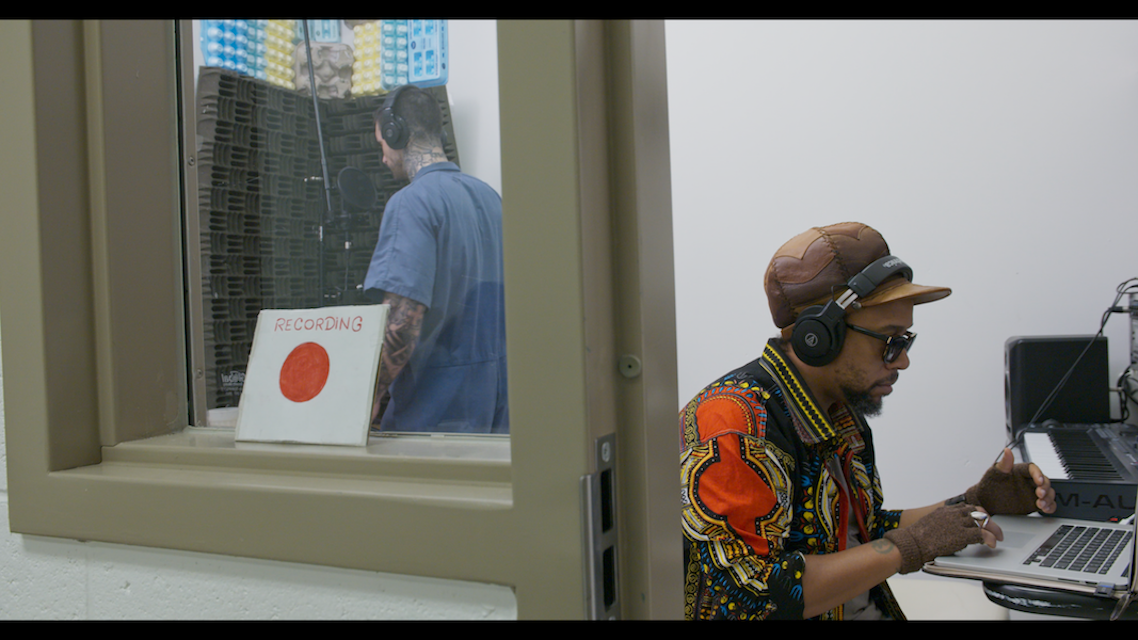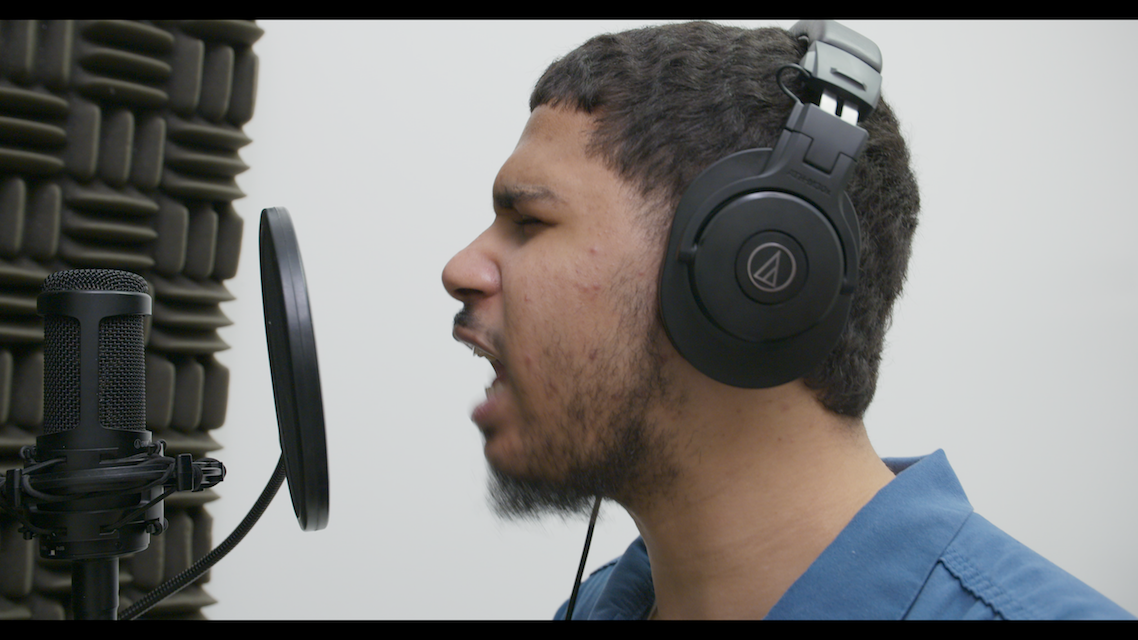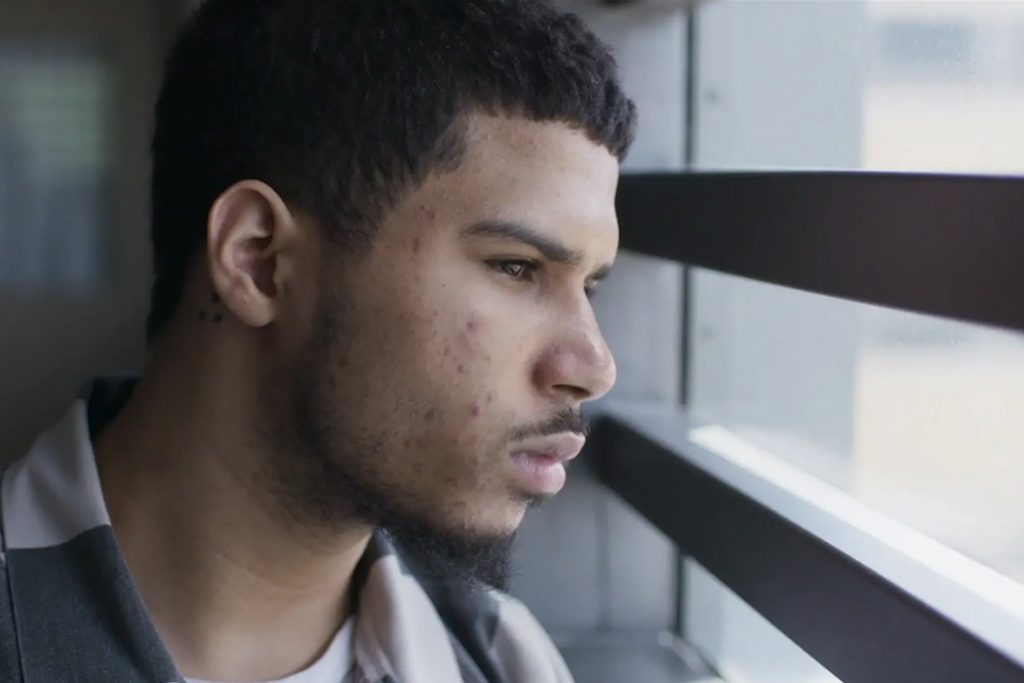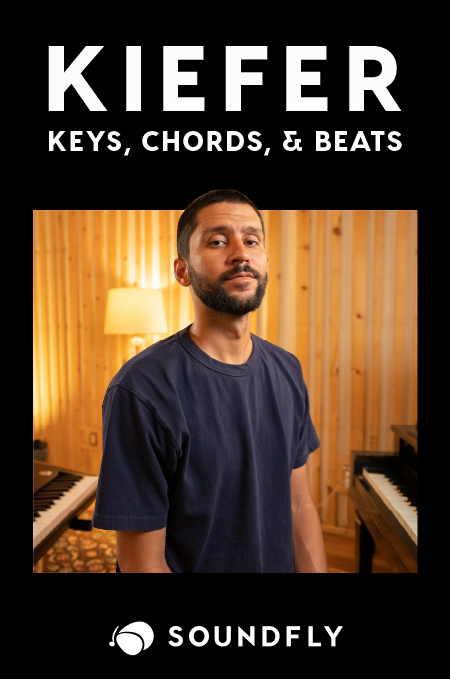
+ This week on Flypaper, we’re exclusively featuring content that covers music initiatives and recordings from prison, in our editorial series, Behind the Bars: A Week Dedicated to Music In, About, and From Prisons. Follow along via this tag or sign up for Soundfly’s mailing list to stay informed about all of our online learning programs.
By Sam Bathrick
“The box,” we have been told, is just a state of mind. The common wisdom says we should think outside of it, transcend it, shuck its limitations. But what happens to the creative process when that box is a very real and permanent concrete structure that surrounds and defines your world?
This is the question I carried, as I and a filmmaking team from Resonant Pictures followed a Grammy-winning recording artist into a Virginia jail to document the making of an album behind bars.
In documentary, we’re drawn to the idea of rare access, to capture a glimpse at something rarely seen. As each high-security door opened before us and closed behind us, I felt that access materializing, while at the same time, I sensed my own freedom of movement physically narrowing.
Two years later, we would complete 16 Bars, a music documentary and soundtrack album recorded almost entirely behind the walls of this jail. Getting there would become an exercise in patience and flexibility, redefining for many of us involved the creative process itself.
What We Knew
Richmond Sheriff C.T. Woody had created a recording studio in the city jail where inmates on good behavior were learning to engineer and record their own music. Speech from the hip-hop crew Arrested Development had been invited to the jail to conduct music workshops with the inmates. The sheriff called them “residents” at his facility.

The recording studio was a part of a larger initiative at the jail called the REAL program (Recovering from Everyday Addictive Lifestyles).
On the jail’s sixth floor, men sat in group therapy, worked the 12 steps, and wrote papers on American history and applied sciences. The Sheriff’s goal was to offer a chance at rehabilitation and to begin to halt an ingrained cycle of recidivism — our justice system’s “revolving door.”
What We Didn’t Know
How could we make a film, a creative venture, inside of a high security facility where our every movement was monitored and controlled? How would Speech produce music — an act of raw and free human expression — with a bunch of men whose lives were controlled by prison guards in a space designed to strip them of their humanity? Would any of it be worth watching or listening to?
The box was before us, it was all around us, and there was no thinking outside of it.
Speech, a pioneer in conscious hip-hop, began by sitting alone in the jail chapel with the men in the program, hearing their stories. Listening. His question, “why are you here?” was never answered by a list of criminal charges. The residents’ life experiences, each unique, told a collective story that served as the real answer.
There were mistakes, bad choices, missed opportunities. There was also the legacy of generational trauma, systemic oppression, poverty, drug abuse — doors closed and paths not taken. Each of these men expected to see the outside world again, though most did not know when. Now, given the chance to reflect, they spoke about their hopes for another chance on the outside.

These words, newly spoken, became lyrics, scribbled in notebooks in small concrete jail cells. In another small concrete room on the sixth floor, Speech met each man one at a time, rigged up a microphone (donated by the local university to the jail studio) and cued up a ProTools session on his laptop.
To many, the blank page represents infinite possibilities, a beginning point where every choice is available to us. We imagine, in this space, the creative process is like an experiment with no variable limits. And yet Speech, with his blank ProTools project open, was already working very much within limitations beyond his control.
+ Read more on Flypaper: “Speech (Arrested Development) on His Commitment to Recording Artists Behind Bars”
Tools of the Trade
On Audio Equipment Choice
There was no choice. One pair of headphones, one cable. No choices to make about acoustics in the room either. Someone had taped discarded egg crates on concrete walls that met in a corner. That was the sound booth.
Like the film crew, Speech knew very little about what he was going to record over the course of his two weeks at the jail. He arrived with no pre-written music. Most of the inmates put on headphones and heard only a click track Speech had set up in the ProTools session.
Speech, an artist who had stood before stadiums full of cheering fans, was alone in a room with a man in a jumpsuit he had just met. He pushed record.

On Lens Choice
The film crew realized early on, we could only work with what we could carry on our bodies. A case of equipment left in one room would soon be out of immediate reach if our security escort locked the door behind them on the way to the next room; and they always did.
As we identified the characters in our film — the four men Speech would be recording with — we realized we had no control over when we would actually be granted access to them. We had to be ready to move when the opportunity arose. Our cameras became stripped down and rudimentary like the recording studio equipment as we moved through the small spaces in the jail, which we learned are small on purpose. Often there was only room for one or two of our crew members at a time.
On day one, I sat across from a man in a jumpsuit I had just met. We were alone in his small jail cell and I was not thinking about lens choice. We pushed record.

What Speech, as the producer of this album, shared in common with the residents of the Richmond City Jail was a deep sense of urgency. In these small spaces, we all felt it. It was the walls of the box around us, the lack of infinite possibilities. Time in the studio was not always promised or given.
A behavioral infraction by a participant in the program could result in lost studio time or dismissal from the entire program. Each awaited court dates, sentencing, visits from lawyers and loved ones that raised the stakes on their time in captivity and sharpened their pencils against paper.
When we did all align to get everyone in the room and push record, the process had a way of stripping itself down to the essentials. Speech connected with the artists, he listened and led with compassion and patience. This was not A Star Is Born — what we captured on camera was the simple act of going on record.
Lightning in a Bottle
There’s an alchemy to the creative process, an invisible hand that, if we’re lucky, can guide the participants in, say, a vocal recording session toward brilliance. I believe that happened inside this jail.
It was in spite of the box or maybe even because of it that these four men, Garland, Teddy, Anthony, and Devonte, were compelled to tell their whole truth into a microphone.
Like hash marks on a cave wall, the film and the album are the record, as Speech says, of this moment in time. And this was how we chose what story to tell in our film, by realizing we had no choice at all.
Ours was the story inside the box, with these four men, in one jail, in one American city. There was no zooming out. It was a story told only in extreme closeup.
+ Read more on Flypaper: Check out the full week of content on music in, about, and from prisons here.
Continuing the Work
Speech would later bring these recordings back to his studio in Atlanta, where the choices became infinite again. Through his hands and those of other musicians and producers who contributed to the album, the raw poetry of these lyrics took on new shapes and forms that we could have never imagined when we were sitting in that small concrete room.
Could we have added full band instrumentation to inmate Garland Carr’s country blues strumming?
Maybe. But Garland wrote those songs in tight spaces, alone, with only a guitar and a microphone. Back on the outside, the producers of the album were unified in wanting to preserve the essence of those small concrete room sessions.
Each of the brilliant beats Speech composed for the hip-hop tracks and his guest verses are raw and concise additions — with one notable exception. For Teddy Kane’s song “Inspire,” Speech assembled a children’s choir to sing the song’s hook. It was a promise Speech made to Teddy in that small concrete room in the jail, and the sound of those children’s voices became one of the most transcendent moments in the film and the album.
When Art:Pre-Ent came on as the label and Lightyear Entertainment as the distributor, Both were aligned on keeping the production raw and generating agreements with the artists that would ensure they were compensated fairly.
Locking Up
In the end, what I learned is that when some doors are closed and locked, the space that remains, no matter how confined, can become charged with with intention.
As creators, we often fuss over the tools — which ones to own, which settings to dial in, which add-ons and attachments to pack. And once we make those choices, the tools themselves create more choices. How do we know where to begin? And how will we know when we’re finished if there’s always more we could do?
So many choices.
At the end of the day, the only choice to make is to push record and tell the truth. That’s what these artists did — on camera, on record. It’s not always about adding or embellishing, or thinking outside of the box. Sometimes simply presenting the box as it is, in its truest, rawest form, from within, is itself an act of liberation.
Rent the film 16 Bars here to watch on your preferred digital platform, and stream the full 16 Bars soundtrack below.
Improve all aspects of your music with Soundfly!
Subscribe to get unlimited access to our premium online courses, an invitation to join our members-only Slack community forum, exclusive perks from partner brands, and massive discounts on personalized mentor sessions for guided learning. Learn what you want, whenever you want, with total freedom.
—
Sam Bathrick is a creative producer for Resonant Pictures, a production company with a mission to tell compelling cultural stories with music at the center. Sam has directed two award winning documentaries “16 Bars” (Lightyear Entertainment) and “200 Miles” (Amazon Prime) that explore the human condition under unique and challenging extremes. He lives in Atlanta, Georgia.




